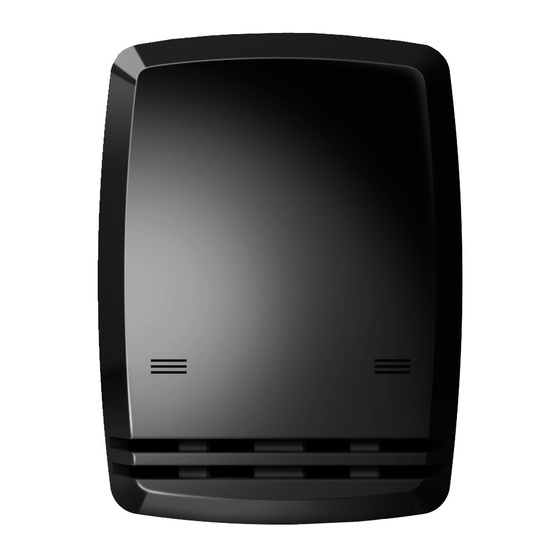
Table of Contents
Advertisement
Quick Links
Advertisement
Table of Contents

Summary of Contents for Cochlear Baha 3
- Page 1 FOR PROFessiOnals A Bone ConduCtion HeAring Solution Fitting Guide...
-
Page 2: Table Of Contents
Caution: Federal law (USA) restricts this device to sale by or on the order of a medical practitioner. © Cochlear 2011. All rights reserved. -
Page 3: Introduction
Baha Sound Processor for both adult and pediatric patients. It also ® provides information on the aftercare required and the accessories that are available for the Cochlear Baha System. ™ ® Each part of the fitting process included in this guide should be covered during a fitting session. -
Page 4: Part 1 Inspection Of The Abutment Area
PaRT 1: inspection of the abutment area PaRT 2: Connecting the sound processor PART 1 Inspection of the abutment area PART 2 Connecting the sound processor Training with the snap trainer 1. Try rotating the abutment to check that it is stable. If the abutment connection seems loose, refer the patient to a trained healthcare professional to have it tightened. -
Page 5: Part 3: Fitting
1. Patient Program the Cochlear Baha Sound Processor using the Cochlear Baha Fitting Software. Launch this software from NOAH or start ™ 2. Indication it directly in stand-alone mode. Before launching the software, install it on a computer as described in the Installation Instructions. - Page 6 Press (preferably using the tool) all three buttons and hold for three seconds. 3 SeC The indicators will stop flashing. *The illustrations used for describing the process of Button Programming, applies to both the Cochlear Baha 3 (BP100) and Cochlear Baha 3 Power (BP110) processors.
-
Page 7: Part 4: Using The Sound Processor
In a programmable processor, LEDs flash to confirm when the processor turns on. 2. Review all the available programs and how they should be used. CHANgINg PROgRAM: A Baha 3 Sound Processor can hold up to 3 programs. To switch programs, quickly press and release the middle button. Audio and visual signals let you know which program you have switched to. - Page 8 PaRT 5: Care of the abutment and sound processor PaRT 5: Care of the abutment and sound processor First weeks Weekly cleaning During the first weeks after surgery, once the dressing is removed, cleaning the 1. Explain that the patient should clean the inside of the abutment on a weekly basis. abutment with the abutment cleaning brush may feel a little rough for the patient.
- Page 9 Cochlear office. nOTe: Cochlear does not recommend using a standard toothbrush for the cleaning of the abutment area as it may be too abrasive. Please use a an abutment cleaning brush as supplied with the Baha Sound Processor.
-
Page 10: Part 6 Troubleshooting
PaRT 6: Troubleshooting PaRT 6: Troubleshooting PART 6 Troubleshooting No sound/weak sound Buttons not working • Weak or dead battery — try a new battery • Keylock enabled Visual Indicator will flash 6x on start-up: • In DAI program — try a different program BlUe indicator gives three short flashes ORanGe... - Page 11 • Programming adjustments may be needed nOTe: Programming adjustment should not be performed by the patient. Should any problem persist after the recommended actions have been taken, return the device to your local Cochlear office for ™ repair/inspection.
-
Page 12: Part 7 Accessories
Audio adapter. Only connection cables supplied by Cochlear should be used. Non-standard connection cables can cause damage to the sound processor and injury to the patient. Cochlear is not liable for any damage resulting from incorrect use or connecting incorrect equipment. -
Page 13: Part 8 Patient Kit And Documents
2. Explain that accessories must be correctly connected to the sound processor. Instructions for the patient A. Accessories for the new Baha 3 Sound Processors use a 3 pin connector. One of the 3 pins are thicker than the others. The thicker pin should be aligned with the thicker hole in the processor before connecting an accessory. - Page 14 Caring for the abutment and sound processor (see page 13-17). Inform the patient where new brushes can be purchased. Device Registration Card Fill in the Device Registration Card together with the patient and send this to Cochlear. Warranty, service and repair Explain warranties.
-
Page 15: Part 9 Follow-Up
Baha device. Cochlear recommends that you use a stronger sound processor for the test than the child’s ® audiogram indicates. This will have a greater impact on the higher frequencies. High frequencies are weakened by passing through skin more than low frequency signals. - Page 16 PaRT 10: Pediatric fitting with Baha softband PaRT 10: Pediatric fitting with Baha softband Fitting the Baha Softband ® Try to make the first moments with the Baha Softband as pleasant for the child as possible. 8. Make sure the sound processor does not touch the auricle or have any It is very important that the child has positive associations with using the Baha Softband.
-
Page 17: References
• Review care and maintenance of the abutment area and the sound processor. • Go through troubleshooting the sound processor. nOTe: Cochlear recommends rotating the position of the plastic snap connector • Advise the parent/caregiver that the test rod or Baha Softband can also be disc regularly to avoid discomfort and soreness. - Page 18 notes notes Notes Notes...
- Page 19 Baha, Baha Divino and Baha intenso are trademarks of Cochlear Bone anchored Solutions. Cochlear and the elliptical logo are trademarks of Cochlear Limited. the names of actual companies and products mentioned herein may be the trademarks of their respective owners. © Cochlear Bone anchored Solutions 2011.
















Need help?
Do you have a question about the Baha 3 and is the answer not in the manual?
Questions and answers